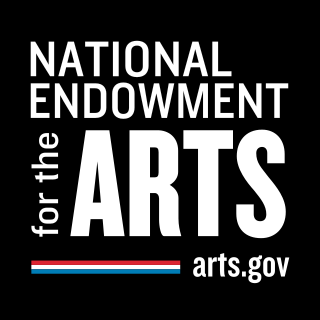
The National Endowment for the Arts (NEA) is an independent agency of the United States federal government that offers support and funding for projects exhibiting artistic excellence. It was created in 1965 as an independent agency of the federal government by an act of the U.S. Congress, signed by President Lyndon B. Johnson on September 29, 1965. It is a sub-agency of the National Foundation on the Arts and the Humanities, along with the National Endowment for the Humanities, the Federal Council on the Arts and the Humanities, and the Institute of Museum and Library Services.
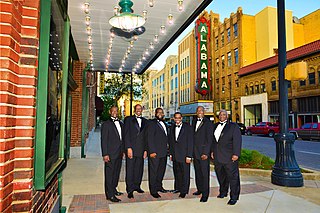
The Birmingham Sunlights is an American a cappella gospel singing group from the Birmingham, Alabama area.
The National Heritage Fellowship is a lifetime honor presented to master folk and traditional artists by the National Endowment for the Arts. Similar to Japan's Living National Treasure award, the Fellowship is the United States government's highest honor in the folk and traditional arts. It is a one-time only award and fellows must be living citizens or permanent residents of the United States. Each year, fellowships are presented to between nine and fifteen artists or groups at a ceremony in Washington, D.C.

Michael Louis Doucet is an American singer-songwriter and musician best known as the founder of the Cajun band BeauSoleil.

Anne Harper Arrasmith was an American artist and curator who lived and worked in Birmingham, Alabama. She co-founded and operated along with Peter Prinz the not-for-profit project Space One Eleven. Arrasmith was a student of Edith Frohock while at University of Alabama at Birmingham.
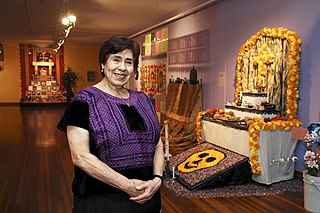
Herminia Albarrán Romero is a Mexican-American artist known for her papel picado and altar-making. She received a National Heritage Fellowship from the National Endowment for the Arts in 2005, which is the United States' highest honor in the folk and traditional arts.
Lily May Ledford was an American clawhammer banjo and fiddle player. After gaining regional radio fame in the late 1930s as head of the Coon Creek Girls, one of the first all-female string bands to appear on radio, Ledford went on to gain national renown as a solo artist during the American folk music revival of the 1960s. In 1985, she was awarded a National Heritage Fellowship.
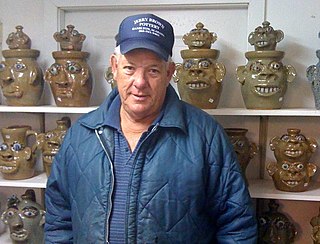
Jerry Dolyn Brown was an American folk artist and traditional stoneware pottery maker who lived and worked in Hamilton, Alabama. He was a 1992 recipient of a National Heritage Fellowship from the National Endowment for the Arts and a 2003 recipient of the Alabama Folk Heritage Award. His numerous showings included the 1984 Smithsonian Festival of American Folklife with his uncle, potter Gerald Stewart.
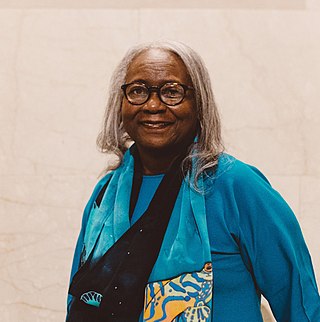
Mary Jackson is an African American fiber artist. She is best known for her sweetgrass basket weaving using traditional methods combined with contemporary designs. A native of coastal South Carolina and a descendant of generations of Gullah basket weavers, Jackson was awarded a MacArthur Foundation fellowship in 2008 for "pushing the tradition in stunning new directions." Mary Jackson is a recipient of a 2010 National Heritage Fellowship from the National Endowment for the Arts.

Sophiline Cheam Shapiro is a Cambodian dancer, choreographer, and educator.

Rosa Elena Egipciaco, often referred to as the 'Queen of Mundillo', is a master Mundillo lacemaker and teacher of the Puerto Rican folk art. In addition to being part of the long Mundillo tradition of her hometown of Moca, Puerto Rico, she belongs to the much larger, much longer tradition of Spanish and European bobbin lacemaking.
Carolyn L. Mazloomi is an American curator, quilter, author, art historian, and aerospace engineer. She is a strong advocate for presenting and documenting African-American-made quilts. Her own quilts are designed to tell complex stories around African-American heritage and contemporary experiences.
Roland L. Freeman was an American photographer and documenter of Southern folk culture and African-American quilters. He was the president of The Group for Cultural Documentation, founded in 1991 and based in Washington, D.C.
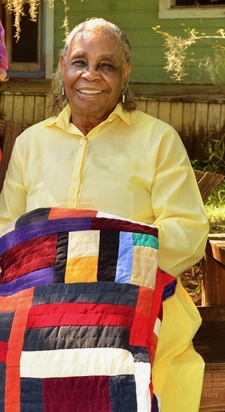
Mary Lee Bendolph is an American quilt maker of the Gee's Bend Collective from Gee's Bend (Boykin), Alabama. Her work has been influential on subsequent quilters and artists and her quilts have been exhibited in museums and galleries around the country. Bendolph uses fabric from used clothing for quilting in appreciation of the "love and spirit" with old cloth. Bendolph has spent her life in Gee's Bend and has had work featured in the Philadelphia Museum of Art as well as the Minneapolis Institute of Art in Minnesota.

Lucy Marie (Young) Mingo is an American quilt maker and member of the Gee's Bend Collective from Gee's Bend (Boykin), Alabama. She was an early member of the Freedom Quilting Bee, which was an alternative economic organization created in 1966 to raise the socio-economic status of African-American communities in Alabama. She was also among the group of citizens who accompanied Martin Luther King Jr. on his 1965 march from Selma to Montgomery, Alabama.
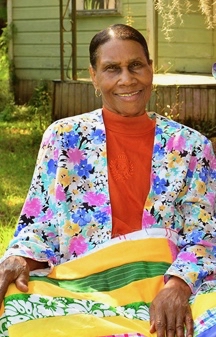
Loretta Pettway is an American artist and quilt maker of the Gee's Bend Collective from Boykin, Alabama. Her quilts are known for their bold and improvisational style.
Mariah Meali'i Namahoe Lucas (Richardson) Kalama was a Native Hawaiian quilter who was awarded the National Heritage Fellowship. She is known for popularizing Hawaiian quilting, and is well known in the Hawaiian quilting community. Kalama was also an ordained lay pastor under Kahu Dr. Abraham Akaka of Kawaiahaʻo Church - Westminster Abbey of the Pacific.
Lucinda Toomer was an American artist who worked in the African-American tradition of quiltmaking. Her quilts are known for their bold compositions, visual rhythm, and improvisational style. They were at the forefront of a surge of national recognition for the art form during the 1990s.

Yvonne Wells is an African-American folk artist and quilter from Tuscaloosa, Alabama. She is best known for her self-taught style and her story quilts depicting scenes from the Bible and the Civil Rights Movement. Her work has been exhibited at the Smithsonian National Museum of African American History and Culture and at the International Quilt Museum.

Nellie Zelda Star Boy Menard was an American quiltmaker and educator. In 1995, she received a National Heritage Fellowship.














